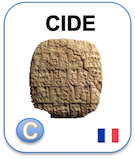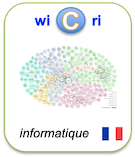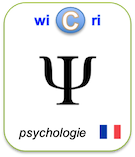Action selection in multi-effector decision making
Identifieur interne : 002588 ( Main/Exploration ); précédent : 002587; suivant : 002589Action selection in multi-effector decision making
Auteurs : Seth Madlon-Kay [États-Unis] ; Bijan Pesaran [États-Unis] ; Nathaniel D. Daw [États-Unis]Source :
- NeuroImage [ 1053-8119 ] ; 2012.
Abstract
Decision making and reinforcement learning over movements suffer from the curse of dimensionality: the space of possible movements is too vast to search or even represent in its entirety. When actions involve only a single effector, this problem can be ameliorated by considering that effector separately; accordingly, the brain’s sensorimotor systems can subdivide choice by representing values and actions separately for each effector.
However, for many actions, such as playing the piano, the value of an action by an effector (e.g., a hand) depends inseparably on the actions of other effectors. By definition, the values of such coordinated multi-effector actions cannot be represented by effector-specific action values, such as those that have been most extensively investigated in parietal and premotor regions. For such actions, one possible solution is to choose according to more abstract valuations over different goods or options, which can then be mapped onto the necessary motor actions. Such an approach separates the learning and decision problem, which will often be lower-dimensional than the space of possible movements, from the multi-effector movement planning problem. The ventromedial prefrontal cortex (vmPFC) is thought to contain goods-based value signals, so we hypothesized that this region might preferentially drive multi-effector action selection.
To examine how the brain solves this problem, we used fMRI to compare patterns of BOLD activity in humans during reward learning tasks in which options were selected through either unimanual or bimanual actions, and in which the response requirements in the latter condition inseparably coupled valuation across both hands. We found value signals in the bilateral medial motor cortex and vmPFC, and consistent with previous studies, the medial motor value signals contained contra-lateral biases indicating effector-specificity, while the vmPFC value signals did not exhibit detectable effector specificity. Although neither region’s value signaling differed significantly between bimanual and unimanual conditions, the vmPFC value region showed enhanced connectivity with the medial motor cortex during bimanual than during unimanual choices. The specific region implicated, the anterior mid-cingulate cortex, is thought to act as a hub that links subjective value signals to motor control centers. These results are consistent with the idea that while valuation for unilateral actions may be subserved by an effector-specific network, complex multi-effector actions preferentially implicate communication between motor regions and prefrontal regions, which may reflect increased top-down input into motor regions to guide action selection.
Url:
DOI: 10.1016/j.neuroimage.2012.12.001
PubMed: 23228512
PubMed Central: 3580036
Affiliations:
Links toward previous steps (curation, corpus...)
- to stream Pmc, to step Corpus: 001A90
- to stream Pmc, to step Curation: 001A90
- to stream Pmc, to step Checkpoint: 001871
- to stream Ncbi, to step Merge: 002384
- to stream Ncbi, to step Curation: 002384
- to stream Ncbi, to step Checkpoint: 002384
- to stream Main, to step Merge: 002616
- to stream Main, to step Curation: 002588
Le document en format XML
<record><TEI><teiHeader><fileDesc><titleStmt><title xml:lang="en">Action selection in multi-effector decision making</title><author><name sortKey="Madlon Kay, Seth" sort="Madlon Kay, Seth" uniqKey="Madlon Kay S" first="Seth" last="Madlon-Kay">Seth Madlon-Kay</name><affiliation wicri:level="2"><nlm:aff id="A1">Center for Cognitive Neuroscience, Duke University, Durham, NC 27708, USA</nlm:aff><country xml:lang="fr">États-Unis</country><wicri:regionArea>Center for Cognitive Neuroscience, Duke University, Durham, NC 27708</wicri:regionArea><placeName><region type="state">Caroline du Nord</region></placeName></affiliation></author><author><name sortKey="Pesaran, Bijan" sort="Pesaran, Bijan" uniqKey="Pesaran B" first="Bijan" last="Pesaran">Bijan Pesaran</name><affiliation wicri:level="2"><nlm:aff id="A2">Center for Neural Science, New York University, New York, NY 10003, USA</nlm:aff><country xml:lang="fr">États-Unis</country><wicri:regionArea>Center for Neural Science, New York University, New York, NY 10003</wicri:regionArea><placeName><region type="state">État de New York</region></placeName></affiliation></author><author><name sortKey="Daw, Nathaniel D" sort="Daw, Nathaniel D" uniqKey="Daw N" first="Nathaniel D." last="Daw">Nathaniel D. Daw</name><affiliation wicri:level="2"><nlm:aff id="A2">Center for Neural Science, New York University, New York, NY 10003, USA</nlm:aff><country xml:lang="fr">États-Unis</country><wicri:regionArea>Center for Neural Science, New York University, New York, NY 10003</wicri:regionArea><placeName><region type="state">État de New York</region></placeName></affiliation><affiliation wicri:level="2"><nlm:aff id="A3">Department of Psychology, New York University, New York, NY 10003, USA</nlm:aff><country xml:lang="fr">États-Unis</country><wicri:regionArea>Department of Psychology, New York University, New York, NY 10003</wicri:regionArea><placeName><region type="state">État de New York</region></placeName></affiliation></author></titleStmt><publicationStmt><idno type="wicri:source">PMC</idno><idno type="pmid">23228512</idno><idno type="pmc">3580036</idno><idno type="url">http://www.ncbi.nlm.nih.gov/pmc/articles/PMC3580036</idno><idno type="RBID">PMC:3580036</idno><idno type="doi">10.1016/j.neuroimage.2012.12.001</idno><date when="2012">2012</date><idno type="wicri:Area/Pmc/Corpus">001A90</idno><idno type="wicri:Area/Pmc/Curation">001A90</idno><idno type="wicri:Area/Pmc/Checkpoint">001871</idno><idno type="wicri:Area/Ncbi/Merge">002384</idno><idno type="wicri:Area/Ncbi/Curation">002384</idno><idno type="wicri:Area/Ncbi/Checkpoint">002384</idno><idno type="wicri:doubleKey">1053-8119:2012:Madlon Kay S:action:selection:in</idno><idno type="wicri:Area/Main/Merge">002616</idno><idno type="wicri:Area/Main/Curation">002588</idno><idno type="wicri:Area/Main/Exploration">002588</idno></publicationStmt><sourceDesc><biblStruct><analytic><title xml:lang="en" level="a" type="main">Action selection in multi-effector decision making</title><author><name sortKey="Madlon Kay, Seth" sort="Madlon Kay, Seth" uniqKey="Madlon Kay S" first="Seth" last="Madlon-Kay">Seth Madlon-Kay</name><affiliation wicri:level="2"><nlm:aff id="A1">Center for Cognitive Neuroscience, Duke University, Durham, NC 27708, USA</nlm:aff><country xml:lang="fr">États-Unis</country><wicri:regionArea>Center for Cognitive Neuroscience, Duke University, Durham, NC 27708</wicri:regionArea><placeName><region type="state">Caroline du Nord</region></placeName></affiliation></author><author><name sortKey="Pesaran, Bijan" sort="Pesaran, Bijan" uniqKey="Pesaran B" first="Bijan" last="Pesaran">Bijan Pesaran</name><affiliation wicri:level="2"><nlm:aff id="A2">Center for Neural Science, New York University, New York, NY 10003, USA</nlm:aff><country xml:lang="fr">États-Unis</country><wicri:regionArea>Center for Neural Science, New York University, New York, NY 10003</wicri:regionArea><placeName><region type="state">État de New York</region></placeName></affiliation></author><author><name sortKey="Daw, Nathaniel D" sort="Daw, Nathaniel D" uniqKey="Daw N" first="Nathaniel D." last="Daw">Nathaniel D. Daw</name><affiliation wicri:level="2"><nlm:aff id="A2">Center for Neural Science, New York University, New York, NY 10003, USA</nlm:aff><country xml:lang="fr">États-Unis</country><wicri:regionArea>Center for Neural Science, New York University, New York, NY 10003</wicri:regionArea><placeName><region type="state">État de New York</region></placeName></affiliation><affiliation wicri:level="2"><nlm:aff id="A3">Department of Psychology, New York University, New York, NY 10003, USA</nlm:aff><country xml:lang="fr">États-Unis</country><wicri:regionArea>Department of Psychology, New York University, New York, NY 10003</wicri:regionArea><placeName><region type="state">État de New York</region></placeName></affiliation></author></analytic><series><title level="j">NeuroImage</title><idno type="ISSN">1053-8119</idno><idno type="eISSN">1095-9572</idno><imprint><date when="2012">2012</date></imprint></series></biblStruct></sourceDesc></fileDesc><profileDesc><textClass></textClass></profileDesc></teiHeader><front><div type="abstract" xml:lang="en"><p id="P1">Decision making and reinforcement learning over movements suffer from the curse of dimensionality: the space of possible movements is too vast to search or even represent in its entirety. When actions involve only a single effector, this problem can be ameliorated by considering that effector separately; accordingly, the brain’s sensorimotor systems can subdivide choice by representing values and actions separately for each effector.</p><p id="P2">However, for many actions, such as playing the piano, the value of an action by an effector (e.g., a hand) depends inseparably on the actions of other effectors. By definition, the values of such coordinated multi-effector actions cannot be represented by effector-specific action values, such as those that have been most extensively investigated in parietal and premotor regions. For such actions, one possible solution is to choose according to more abstract valuations over different goods or options, which can then be mapped onto the necessary motor actions. Such an approach separates the learning and decision problem, which will often be lower-dimensional than the space of possible movements, from the multi-effector movement planning problem. The ventromedial prefrontal cortex (vmPFC) is thought to contain goods-based value signals, so we hypothesized that this region might preferentially drive multi-effector action selection.</p><p id="P3">To examine how the brain solves this problem, we used fMRI to compare patterns of BOLD activity in humans during reward learning tasks in which options were selected through either unimanual or bimanual actions, and in which the response requirements in the latter condition inseparably coupled valuation across both hands. We found value signals in the bilateral medial motor cortex and vmPFC, and consistent with previous studies, the medial motor value signals contained contra-lateral biases indicating effector-specificity, while the vmPFC value signals did not exhibit detectable effector specificity. Although neither region’s value signaling differed significantly between bimanual and unimanual conditions, the vmPFC value region showed enhanced connectivity with the medial motor cortex during bimanual than during unimanual choices. The specific region implicated, the anterior mid-cingulate cortex, is thought to act as a hub that links subjective value signals to motor control centers. These results are consistent with the idea that while valuation for unilateral actions may be subserved by an effector-specific network, complex multi-effector actions preferentially implicate communication between motor regions and prefrontal regions, which may reflect increased top-down input into motor regions to guide action selection.</p></div></front></TEI><affiliations><list><country><li>États-Unis</li></country><region><li>Caroline du Nord</li><li>État de New York</li></region></list><tree><country name="États-Unis"><region name="Caroline du Nord"><name sortKey="Madlon Kay, Seth" sort="Madlon Kay, Seth" uniqKey="Madlon Kay S" first="Seth" last="Madlon-Kay">Seth Madlon-Kay</name></region><name sortKey="Daw, Nathaniel D" sort="Daw, Nathaniel D" uniqKey="Daw N" first="Nathaniel D." last="Daw">Nathaniel D. Daw</name><name sortKey="Daw, Nathaniel D" sort="Daw, Nathaniel D" uniqKey="Daw N" first="Nathaniel D." last="Daw">Nathaniel D. Daw</name><name sortKey="Pesaran, Bijan" sort="Pesaran, Bijan" uniqKey="Pesaran B" first="Bijan" last="Pesaran">Bijan Pesaran</name></country></tree></affiliations></record>Pour manipuler ce document sous Unix (Dilib)
EXPLOR_STEP=$WICRI_ROOT/Ticri/CIDE/explor/HapticV1/Data/Main/Exploration
HfdSelect -h $EXPLOR_STEP/biblio.hfd -nk 002588 | SxmlIndent | more
Ou
HfdSelect -h $EXPLOR_AREA/Data/Main/Exploration/biblio.hfd -nk 002588 | SxmlIndent | more
Pour mettre un lien sur cette page dans le réseau Wicri
{{Explor lien
|wiki= Ticri/CIDE
|area= HapticV1
|flux= Main
|étape= Exploration
|type= RBID
|clé= PMC:3580036
|texte= Action selection in multi-effector decision making
}}
Pour générer des pages wiki
HfdIndexSelect -h $EXPLOR_AREA/Data/Main/Exploration/RBID.i -Sk "pubmed:23228512" \
| HfdSelect -Kh $EXPLOR_AREA/Data/Main/Exploration/biblio.hfd \
| NlmPubMed2Wicri -a HapticV1
|
| This area was generated with Dilib version V0.6.23. | |



